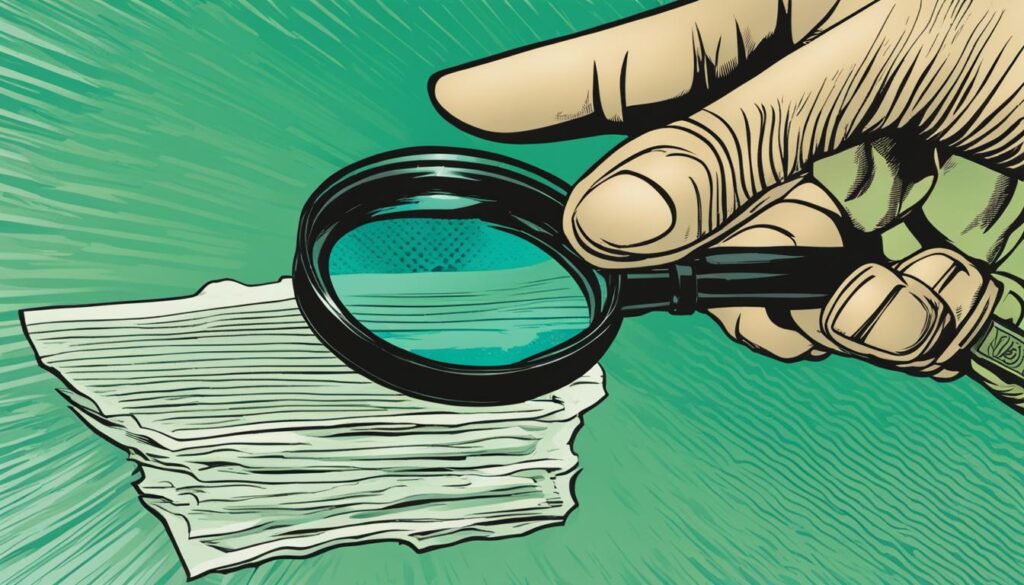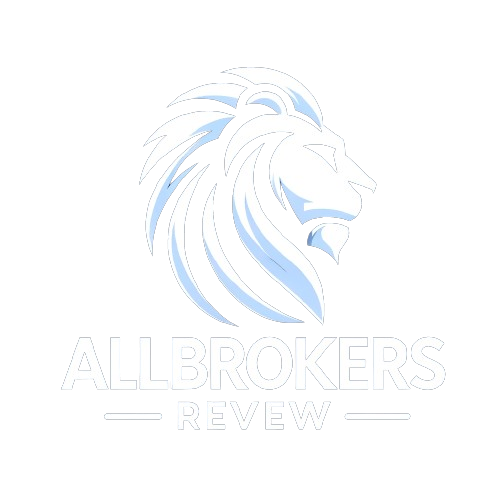When it comes to regulatory compliance, verifying the authenticity of your chosen regulatory body is of utmost importance. Poorly executed regulatory compliance verification can lead to legal and financial troubles in the future. To ensure compliance and peace of mind, I’ve compiled essential tips to guide you throughout the regulatory body verification process.
Key Takeaways
- Regulatory compliance verification is a critical aspect of conducting business.
- The regulatory verification process involves verifying the authenticity of your chosen regulatory body.
- Choosing the right regulatory body for verification is crucial to ensure authenticity and compliance.
- Gathering all necessary documents is the first step in initiating the verification process.
- The verification timeline can vary and includes follow-up inquiries and results verification.
Understanding Regulatory Body Verification
Before delving into the tips on how to ensure authentic Regulatory Body Verification, it’s crucial to understand what the process entails and why it’s essential to maintain regulatory compliance. Verification is the process of confirming the authenticity of a regulatory body, ensuring that they meet the required standards and regulations.
The purpose of verification is to provide assurance to stakeholders, such as clients and investors, that the regulatory body is legitimate and trustworthy. Verification also benefits the regulatory body itself as it reinforces their credibility and reputation.
As businesses and organizations are subject to an increasing number of regulatory requirements, regulatory compliance verification has become even more critical. It assures that businesses operate legally and ethically, ensuring consistency in regulatory compliance adherence.
Therefore, understanding the importance of Regulatory Body Verification and regulatory compliance can help you navigate through the verification process more efficiently and ensure authenticity.
Examples of Regulatory Compliance
Regulatory compliance applies to industries as diverse as healthcare, finance, and environmental protection. An organization can assure regulatory compliance through:
- Timely and accurate documentation and record-keeping.
- Regular audits and risk assessments.
- Employee training and education.
- Best practices and guidelines implementation.
Regulatory compliance also involves adhering to statutory laws, i.e., state and federal. Given that regulations and laws change frequently, staying up-to-date with the latest regulatory changes and ensuring compliance can be challenging.
“Compliance is a journey, not a destination.”
Stay informed about regulatory compliance requirements and use trustworthy sources when obtaining information. The following sections will provide you with guidance on how to verify your regulatory body.
Choosing the Right Regulatory Body
When it comes to regulatory verification services, it’s essential to choose the right regulatory agency. Verification by an accredited and recognized regulatory body grants credibility and assures compliance.
It’s crucial to consider the regulatory agency’s experience and familiarity with your industry. Some bodies have more experience in specific sectors than others. A regulatory agency that specializes in your industry will have a better understanding of your unique needs, requirements, and regulations.
Another factor to consider is the regulatory body’s reputation. Conduct thorough research on the regulatory agency’s past performance to ensure the legitimacy of the regulatory body verification and compliance process.
Lastly, consider the fees charged by the regulatory agency. While a lower fee may seem attractive, it’s crucial to ensure that the regulatory agency meets the necessary standards and requirements for accreditation. Researching regulatory agency verification takes time and effort, but it’s well worth it for peace of mind and compliance.
Factors to Consider When Choosing a Regulatory Body
| Factors | Description |
|---|---|
| Industry Experience | Choose a regulatory agency with experience in your industry |
| Reputation | Conduct thorough research on the regulatory agency’s past performance to ensure its legitimacy. |
| Fees | Compare the fees of different regulatory agencies while ensuring they meet the necessary standards for accreditation. |
Researching Regulatory Body Accreditation
As mentioned in the previous sections, accreditation is a vital aspect of regulatory body verification. It plays a significant role in verifying the authenticity of the regulatory body. Therefore, it’s crucial to research and confirm the accreditation status of the chosen regulatory body.
There are various regulatory body certification and regulatory body accreditation bodies. One of the renowned accreditation bodies is the International Accreditation Service (IAS). It provides accreditation services to numerous regulatory bodies across the globe.
When researching regulatory body accreditation, it’s important to check the validity of the accreditation body. You can do this by visiting the official website of the accreditation body and looking for the list of accredited regulatory bodies. Moreover, you can also contact the accreditation body directly for verification.
Also, it’s crucial to ensure that the accreditation body offers accreditation services in the specific regulatory category you require. For instance, if you need to verify a healthcare regulatory body, ensure that the accreditation body offers accreditation services for healthcare regulatory bodies.
“Researching regulatory body accreditation is a crucial step in ensuring the authenticity of the regulatory body verification process.”
Gathering Relevant Documents
Before proceeding with regulatory checks and initiating the verification process, it’s crucial to gather all necessary documents and information. Proper documentation is a critical aspect of the verification process, so make sure you have everything you need. Here are the typical documents required for verification:
| Document | Description |
|---|---|
| Legal Business Name | Your company’s legal business name as registered with appropriate government agencies. |
| Tax ID | Your company’s tax identification number, issued by the relevant government authority. |
| Company Address | The physical location of your company, including street address, city, state, and zip code. |
| Financial Information | Your company’s financial statements, including balance sheets, income statements, and cash flow statements that demonstrate your financial stability and solvency. |
| Business License | A document that grants your company legal permission to operate in its respective industry and location. Depending on your location, you may also need to provide permits for specific activities. |
| Partnership Agreements | If you’re operating in partnership with others, you’ll need to provide partnership agreements to show who owns what percentage of the company. |
Make sure that all documents are up to date and accurate. Incomplete or outdated documents can delay the verification process or even disqualify your application. It’s also recommended to regularly review and update these documents to ensure ongoing compliance with regulatory requirements.
Submitting Verification Application
Now that I have gathered all the necessary documents, it’s time to submit my verification application to the regulatory body. The regulatory body verification process typically involves submitting an application form and the required documents. It’s essential to ensure that the application is filled out completely and accurately, as any mistakes or omissions can lead to delays or denials.
Before submitting the application, I will double-check the accuracy of the provided information and verify that all required documents are included. I will also review the application guidelines and requirements to ensure that I have met all criteria.
Upon submitting the application, I will receive a confirmation email with details regarding the next steps in the regulatory body verification process. It’s important to note that processing times vary depending on the chosen regulatory body and the completeness of the application.
Additional Tips
- Ensure that all documents are complete, accurate, and up-to-date.
- Follow the application guidelines and requirements provided by the regulatory body.
- Submit the application in a timely manner to avoid delays in the verification process.
- Ensure that all required fees are paid.
Responding to Follow-up Inquiries
As part of the regulatory body verification process, it’s common for regulatory bodies to request additional information or clarification. These requests should be taken seriously as they can impact the outcome of your verification.
When responding to follow-up inquiries, it’s essential to be prompt, courteous, and thorough. Make sure you understand the request and ask for any clarification if needed. Gather and submit all necessary documents promptly, ensuring they meet the regulatory body’s requirements.
Use clear, concise language in your response, and avoid providing additional information that’s not requested. Be honest, transparent, and professional in your communication with the regulatory body.
If you’re unsure about how to respond to a request, seek guidance from an expert in regulatory compliance or legal support. With the right approach, you can effectively respond to follow-up inquiries and ensure an authentic regulatory body verification process.

Understanding the Verification Timeline
After submitting the verification application, the regulatory body will begin the verification process. However, it’s essential to note that verification processes can vary in terms of duration. Generally, the process takes between two to six weeks, but it can take longer in some cases.
During this time, the regulatory body might have follow-up inquiries, which could affect the verification timeline. To manage expectations, it’s crucial to respond promptly to any inquiries and provide accurate information.
It’s also worth noting that some regulatory bodies might experience delays due to high demand or other factors. If the process exceeds the expected timeline, it’s advisable to contact the regulatory body for updates and avoid making assumptions.
Keeping track of the verification timeline is crucial to plan and manage expectations effectively. Hence, it’s recommended to ask the regulatory body for an estimated timeline during the application submission process.
Verifying the Verification Results
After completing the regulatory body verification process, it’s essential to verify the results for accuracy. Verifying the results ensures that no errors were made during the process and that the information provided is correct.
Using regulatory authority verification methods to confirm the results is highly recommended. This helps to ensure the authenticity of the regulatory body verification, adding an extra layer of confidence in the verification outcome.
One of the most reliable regulatory authority verification methods is to cross-reference the outcome with publicly available regulatory body verification records. Checking the records provides transparency and reassurance to confirm the regulatory body verification process’s success.

Another effective way to verify the verification results is by conducting internal checks and audits. This helps to confirm the regulatory body verification’s validity and identify any discrepancies or issues that need addressing.
Successfully verifying the regulatory body verification results is crucial to guaranteeing regulatory compliance and maintaining trust with stakeholders. By following the tips provided in this section and using regulatory authority verification, you can ensure the accurate and genuine verification results of your regulatory bodies.
Ensuring Ongoing Compliance
After successfully verifying the regulatory body, ongoing compliance is crucial to maintaining authenticity. It’s important to implement a compliance management system and regularly conduct regulatory compliance verification to ensure adherence to regulatory requirements.
Implementing a Compliance Management System
One of the most effective ways to ensure ongoing compliance is by implementing a compliance management system. This system should include clear policies and procedures for regulatory compliance, regular audits, and monitoring of employee compliance. It’s also essential to appoint a compliance officer to oversee the system.
Conducting Regulatory Compliance Verification
Regular regulatory compliance verification is essential to ensure ongoing compliance. This verification process should include reviewing and updating policies and procedures, conducting internal audits, and monitoring regulatory changes to ensure compliance.
“Regular regulatory compliance verification is essential to ensure ongoing compliance.”
Training Employees
Employees play a critical role in ensuring ongoing compliance. It’s essential to provide regular training and education to employees on regulatory compliance requirements and the importance of compliance. This training should cover key compliance areas relevant to their roles and responsibilities.
Monitoring Third-Party Compliance
If the regulatory body involves using third-party vendors, it’s important to ensure they comply with regulations as well. This can be achieved by conducting regular reviews and audits of third-party compliance activities and implementing necessary corrective actions.
Conclusion
Throughout this article, I have shared essential tips and insights on authentic regulatory body verification. It is crucial to understand the regulatory body verification process and choose the right regulatory body, and researching its accreditation status is a vital step towards ensuring authenticity.
Gathering all the required documents, submitting the verification application, and responding to follow-up inquiries are crucial steps in the verification process. It’s important to understand the typical timeline for regulatory body verification and manage expectations accordingly.
Once the verification is completed, it’s important to verify the results for accuracy, and ongoing compliance with regulatory requirements is necessary. By following the tips discussed throughout the article, you can navigate the verification process with ease and ensure the authenticity of your regulatory body verification.
Overall, regulatory compliance verification is vital for compliance and peace of mind. By following the tips provided in this article, you can ensure your regulatory body verification is authentic and meets regulatory requirements.
FAQ
What is Regulatory Body Verification?
Regulatory Body Verification is a process that ensures the authenticity and compliance of regulatory bodies. It involves verifying the accreditation and regulatory authority of a regulatory body to ensure its legitimacy.
Why is Regulatory Body Verification important?
Regulatory Body Verification is crucial in maintaining transparency, trust, and credibility within regulatory systems. It helps establish confidence in the regulatory body’s ability to enforce regulations and protect the interests of stakeholders.
How do I choose the right regulatory body for verification?
When selecting a regulatory body for verification, consider factors such as its reputation, expertise, accreditation status, and alignment with your industry or regulatory requirements.
How can I research a regulatory body’s accreditation?
To research a regulatory body’s accreditation, visit their official website or contact the relevant accreditation organizations. They can provide information on the regulatory body’s accreditation status and any associated certifications.
What documents do I need for regulatory body verification?
The documents required for regulatory body verification may vary, but typically include legal registration certificates, proof of compliance with regulatory standards, professional qualifications, and organizational structure details.
How do I submit my verification application?
The process for submitting a verification application may differ depending on the regulatory body. It usually involves completing an application form, providing the necessary documents, and submitting them either online or via mail as per the regulatory body’s guidelines.
What should I do if regulatory bodies require additional information during the verification process?
If regulatory bodies request additional information or clarification, respond promptly and provide all the requested details accurately. Clear communication and timely responses will help expedite the verification process.
How long does the regulatory body verification process typically take?
The duration of the regulatory body verification process can vary depending on factors such as the complexity of the verification, the responsiveness of the regulatory body, and any potential delays. It is advisable to consult with the regulatory body or refer to their guidelines for an estimate.
How can I verify the results of the regulatory body verification?
To verify the results of the regulatory body verification, review the official verification outcome document provided by the regulatory body. Cross-reference the information with the regulatory body’s website or contact them directly if you have any doubts or discrepancies.
How can I ensure ongoing compliance after successful regulatory body verification?
To ensure ongoing compliance after successful verification, stay updated on regulatory changes, monitor regulatory body communications, implement necessary changes or improvements to meet regulatory requirements, and document compliance efforts.





